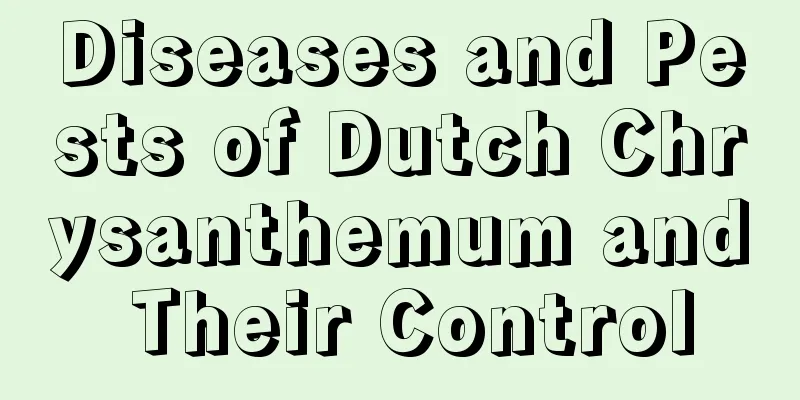Diseases and Pests of Dutch Chrysanthemum and Their Control

Diseases and their control of Dutch chrysanthemumThe diseases of Dutch chrysanthemum are as follows: powdery mildew. During the cultivation of chrysanthemums, if the plant density is high, resulting in poor ventilation, especially when the humidity is too high, chrysanthemums are particularly prone to powdery mildew, which harms the leaves of the plants. Yellow spots appear in the early stages, accompanied by white powder. In severe cases, the leaves are twisted, or even turn yellow and fall off, and the plants are poorly developed or even dwarfed. The powdery mildew of chrysanthemum is mostly caused by fungi and can be spread through the air. It is generally more likely to occur when it is cold and humid in spring and autumn. When powdery mildew breaks out in chrysanthemums, it is necessary to spray pesticides in time for treatment. The pesticides that can be used include 500 times diluted 36% methyl thiophanate, 1500 times diluted 20% triadimefon, etc. Continuous use of several times will have better effects. Note that in winter, diseased leaves should be removed and dead leaves should be burned, and ventilation should be paid attention to in daily management. Brown spot disease. Brown spot disease is also a common and serious disease for chrysanthemums. It is necessary to spray pesticides in time for prevention and control, such as 2000 times diluted 25% oxycarboxin wettable powder. Chrysanthemum also has several diseases including mosaic disease, sclerotinia disease, chlorosis, rust, etc. In order to prevent these diseases, it is necessary to take measures in daily management, disinfect the soil, keep the environment ventilated, etc., with prevention as the main approach and combining prevention with control. Pests of Dutch Chrysanthemum and Their ControlThe pests caused by chrysanthemums are mainly moth pests and underground pests. You can disinfect the soil and kill insects using drugs such as chlorpyrifos. Pests such as aphids and red spiders may also cause damage. Aphids and red spiders mainly damage the stems and leaves of the chrysanthemum, causing the leaves to turn yellow and fall off, and even affecting its normal growth. When aphids or red spiders occur, you can spray them with 1000 times diluted 50% DDT emulsifiable concentrate or use 1000 to 1500 times diluted Dimethoate for prevention and control. |
<<: Disease and Pest Control of Millettia reticulata
>>: Diseases and pests of Mirabilis jalapa and their control
Recommend
When is the right time to plant tomatoes?
The right time to plant tomatoes Tomatoes belong ...
When is the best time for rose cuttings to survive (how to make rose cuttings have a high survival rate)
Can roses survive from cuttings? Roses can be pro...
Mint cultivation methods and precautions
1. Soil Mint is highly adaptable to soil and can ...
How to grow lavender, lavender seed planting method
1. Planting time Lavender is usually planted in s...
How to grow blueberry trees well
Blueberry Tree Growing Conditions During the grow...
Is tobacco planting profitable? How much is the profit?
Is growing tobacco profitable? Tobacco cultivatio...
The meaning of the fortune tree
1. Meaning The meaning of the money tree is self-...
Cultivation methods and precautions of Fraxinus chinensis
The fraxinus chinensis is easy to grow. Its branc...
How to grow the succulent winter beauty
Winter Beauty Growth Conditions Winter beauty has...
How to grow potted carnations? How to grow potted carnations and what to pay attention to
How to grow carnation in potted plants 1. Potting...
Add some material to the hydroponic bottle, the roots will be as thick as fingers, and the leaves will be green and glow
The most feared thing about water-growing flowers ...
Christmas cactus amaryllis... blooms 3 or 4 times a year, how does it do that?
If you grow Christmas cactus like this, it can bl...
What are the cultivation methods and precautions for mountain roses?
Growth habits of mountain roses Mountain rose, al...
Can I still grow succulents in winter?
The first factor: temperature If you want to grow...
Is the yield of yellow peach high? What is the yield per mu?
Is the yield of yellow peach high? The yield of y...









